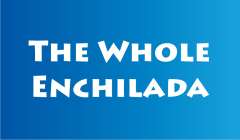An Integrated Program for Migraine
Winter 2018

These are exciting times for the fields of migraine and pain, the most common of all neurological disorders. New understanding of the basic mechanisms of migraine and pain are leading to therapies that have the potential to transform the lives of the hundreds of millions of individuals worldwide who suffer from migraine. The UCLA Goldberg Migraine Program is leading efforts to drive advances in migraine and pain through basic laboratory research, clinical research, education, and patient care. In the laboratory, Guido Faas, Ph.D., has developed new approaches for triggering, monitoring, and modulating brain activity in ways that will be helpful for understanding and treating migraine and pain. Mollie Johnston, M.D., and Chelsea Hesterman, M.D., conduct groundbreaking work investigating novel roles of the nerves of the neck in transmitting headache pain, and are working on new therapies that target these nerves. By reducing the abnormal nerve activity, many patients have a reduction in head pain, or are pain free, without medicines. Angel Moreno, N.P., is developing new nonmedication treatments for patients that involve diet, breathing, vitamin, and herbal approaches, among others. Feridey Carr, Ph.D., a clinical psychologist at UCLA, is developing new behavioral approaches that target not only migraine and pain symptoms, but also coexisting sleep problems, anxiety, and depression. Joshua Kamins, M.D., a clinical fellow who will soon join the UCLA Neurology faculty, has been working to improve the understanding and treatment of post-traumatic headache, and the relationships between migraine and concussion.
Dr. Charles states, “I am grateful to be working with such a talented and innovative group of people during this time of extraordinary progress. We are looking forward to continuing our efforts to better understand migraine and pain, to educate our colleagues and future generations of clinicians and scientists, and to provide multidisciplinary care for patients that includes highly promising new therapies.”
The UCLA Goldberg Migraine Program is unique in its integration of basic research, dedicated neurological care for headache, and the development of alternative and nontraditional headache therapies all under one roof. This crossdisciplinary interaction of many paths in migraine care and research strengthens the work of each faculty member and drives the development of new therapies.